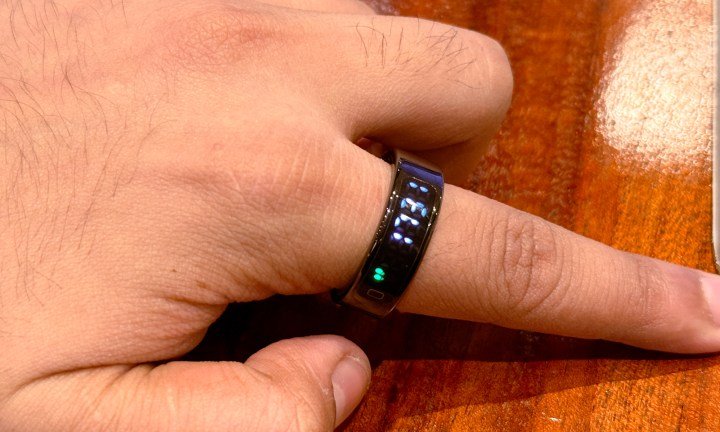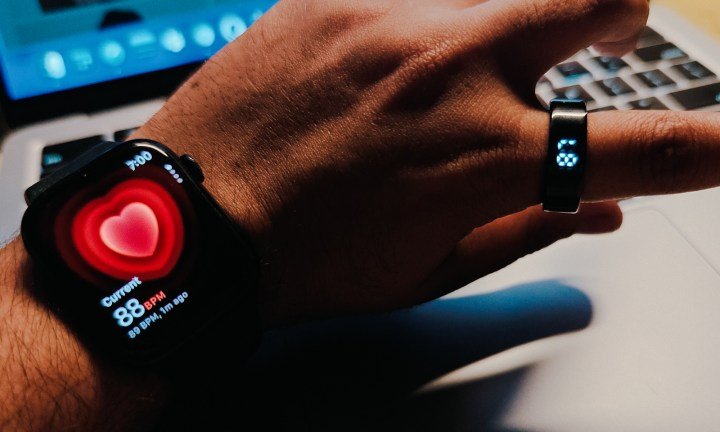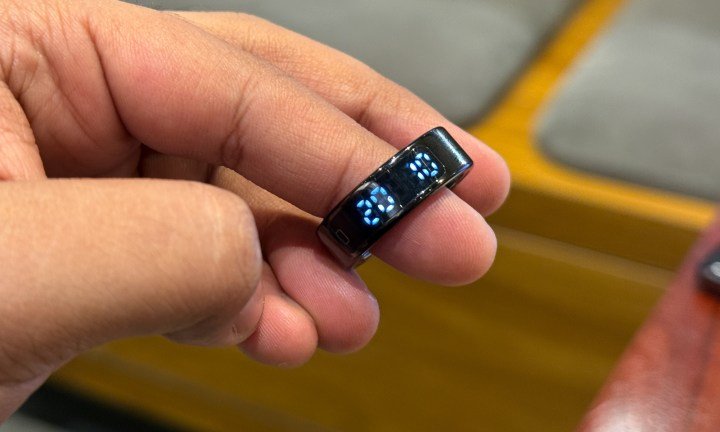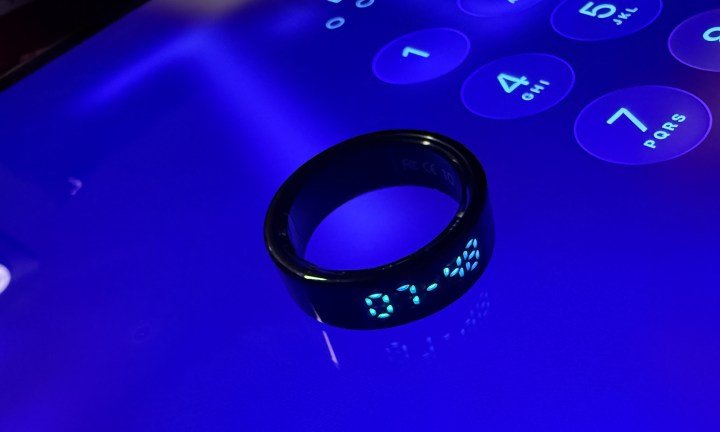I don’t need yet another screen in my life. Or at least that’s what I have been telling myself for years. I used to believe it was a pet peeve. But a quick look at Reddit and X shows a whole bunch of people who are experimenting with the “dumb phone” trend, or flaunting their “minimalist tech” stack.
My attempts at less screen exposure have been somewhat of a mixed bag. There’s now a screen in my hand or pocket at all times. For work, there’s a 24-inch or bigger screen that I stare at, for roughly eight hours each day. On my wrist, a smartwatch screen keeps lighting up every now and then, vying for my attention to an important notification.
I’ve deactivated my social accounts, not because I hate the concept, but to avoid the doom scrolling spiral that can easily suck up an hour, or more. So, when I saw an ad for a new smart ring that has a tiny screen on top, I was intrigued. And terrified. Despite all the skepticism, I ordered one, and surprisingly, don’t entirely hate it.
What can it do?

The device in question is the Pebble Halo, which costs merely around $100 and currently up for pre-orders in India. A Quick Look at AliExpress suggests that rings with the same fundamental design have been on sale in China for as little as $40.
That absurd pricing makes one question whether the likes of Samsung and Oura are simply ripping off customers by selling smart rings that cost nearly four times as much. Some even burden buyers with a subscription fee on top, so there’s that.
Now, let’s talk a bit about Pebble, which counts Amazon, Meta, and Intel among its partners. The company’s portfolio includes earbuds, smart home devices, speakers, and over two dozen smartwatches. And yeah, it’s not totally averse to the blatantly copying competitors, such as the Apple Watch.
So, is this ring a total dud? Well, not entirely. The build is stainless steel, and the company even claims water resistance, though I am not too sure whether I should put that claim to the test. I can measure heart rate, heart rate variability, blood oxygen saturation, track sleep and stress level, and monitor fitness activities, such as the number of steps walked.
Compared to the Apple Watch, the biosensing measurements for heart rate tracking and blood oxygen measurement (SpO2) are within the 1-2% deviation margin. As far as the step counting capability goes, the variation was usually 5-8% after two days’ worth of testing.

I wouldn’t push this smart ring for anything more granular in terms of workout tracking, primarily because my experience with low-cost wearables has been underwhelming in terms of accuracy. The ring has a stress detection system, which perpetually told me that I was distressed even if I was engaged in fun comics or just bopping to some chill music in the car.
The display dilemma
From the moment I took the Pebble smart ring out of the box, I was cynical about the appeal of the tiny display on it. Using the companion app, you can configure what you want to see on the tiny LED screen, though there aren’t too many options.
At its best, you can see the time, steps walked, heart rate, and the stress level. For other biomarkers, such as heart rate variability, blood oxygen levels, and sleep levels, you will have to check them in the mobile app’s dashboard. That kind of defeats the whole purpose of putting a display on a ring, but in hindsight, there’s a convenient side to it.
You see, this is not a touch-sensitive panel that you can swipe or tap. There’s a small area on the edge with a rectangle icon where you can slide or tap your thumb to switch between different data points appearing on the screen.
I would keep the options to a bare minimum, rather than tap at least five or six times to see the health metric I want to check, after cycling past all the readings that are of no use to me at that moment. In my case, I limited the display to only show the step count, heart rate, and the time.

Those are the metrics I am predominately chasing these days, so it makes sense to quickly check them out without getting frustrated after tapping on the display activation area. Plus, for sleep tracking, wearing a ring is a lot more comfortable than a thick smartwatch.
My biggest skepticism was whether I wanted “yet another screen” in my life. Well, that’s not the case. There is no always-on display (AOD) system here, the display only lights up when you tap on the activation area. Most importantly, I never activated it accidentally.
When you are wearing the ring on the index finger — which is what brands suggest — the touch-sensitive area lies on the open side of the palm. That means unless you tap the edge with the tip of your thumb, the display will stay dark.

Also, offering an always-on display convenience is not feasible here because the battery would literally die in a few hours. It’s actually a sensible idea to keep the display off and only have it show the time and health-related data when you want to see it.
There is no haptic feedback system, nor is there a way to bind the display to notifications. In a nutshell, the typical distraction scenarios you expect from a display are well beyond the reach of the Pebble ring.
But this smart ring is not without its faults. To check the heart rate, you have to wait a healthy few seconds before the readings appear on the screen. The stress measurement system on the ring — or any other wearable that I have tested so far — hasn’t served any meaningful purpose.
Actually, it’s not a terrible idea

In retrospect, I would prefer a smart ring over a smartwatch, if I was not too deep into wearable-based workout analysis or using features such as GPS navigation, listening to music, or watching exercise metrics in real-time. A ring with a display is just a less digitally intrusive, or ergonomically convenient, way of keeping an eye on the vitals.
Another cool aspect is the gesture-based control. With finger gestures, the Pebble ring allows you to scroll past a page in an e-book, or switch to the next video. I wish Android offered a universal tool that would allow users to bind ring-driven gestures to app actions.
Pebble has only implemented these gestures to a rudimentary level, but the possibilities are immense, IF executed well. To its credit, the companion app also comes with a few built-in game experiences, such as Flappy Bird, that work via finger gestures. It’s not as convenient as it sounds, but a fun start.
At the end of the day, I am not averse to the idea of a display on smart rings, as long as it doesn’t destroy the battery mileage. If implemented with enough flexibility, functional thoughtfulness, and sensor accuracy, I can see a healthy few takers of the smart ring format over smartwatches.













